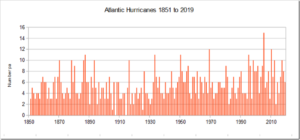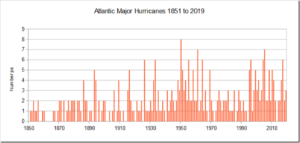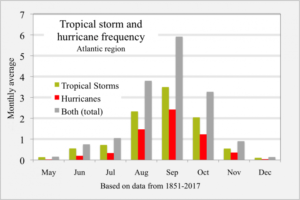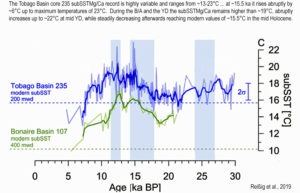by P. Gosselin, Nov 08, 2025 in NoTricksZone
The US National Oceanic and Atmospheric Administration (NOAA) predicted that an above average Atlantic huricane seacon for 2025.
Now that the season is winding down, we are able to start concluding and summarizing the season: it’s going to come in as near normal activity. The forecast made earlier this year was a bit on the hyped side.
Huricane season forecasts have not really improved, despite all the claims that models are better than ever:
“In my 30 years at the National Weather Service, we’ve never had more advanced models and warning systems in place to monitor the weather,” said NOAA’s National Weather Service Director Ken Graham. “This outlook is a call to action: be prepared. Take proactive steps now to make a plan and gather supplies to ensure you’re ready before a storm threatens.”
NOAA’s outlook for the 2025 Atlantic hurricane season, which goes from June 1 to November 30, predicted a 60% chance of an above-normal season, and a 10% chance of a below-normal season. The agency forecast a range of 13 to 19 total named storms (winds of 39 mph or higher). Of those, 6-10 were forecast to become hurricanes (winds of 74 mph or higher), including 3-5 major hurricanes (category 3, 4 or 5; with winds of 111 mph or higher).
Near average season
…










